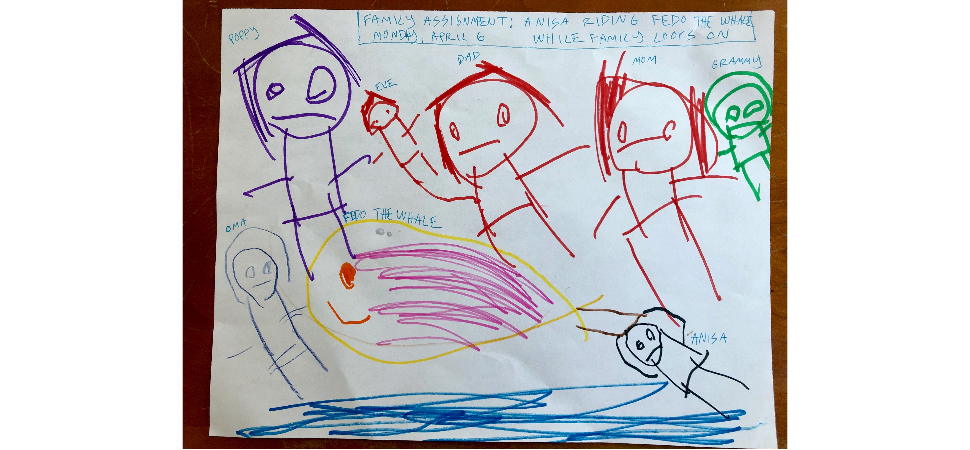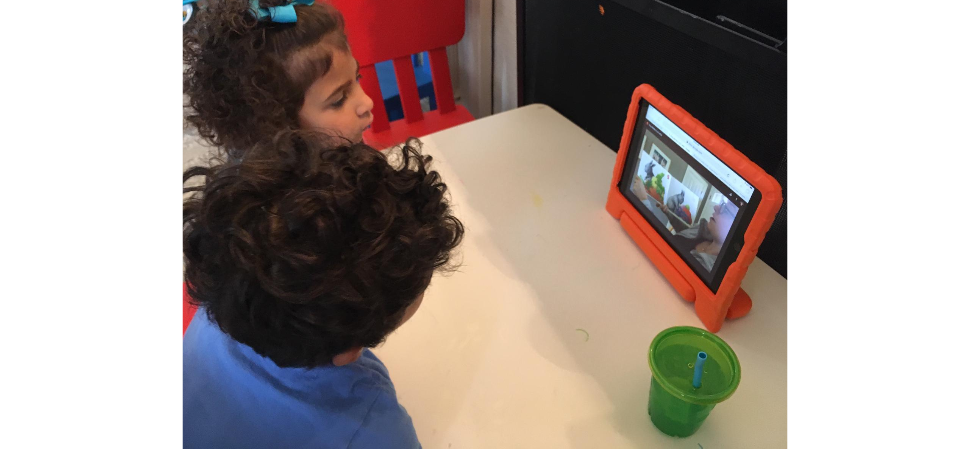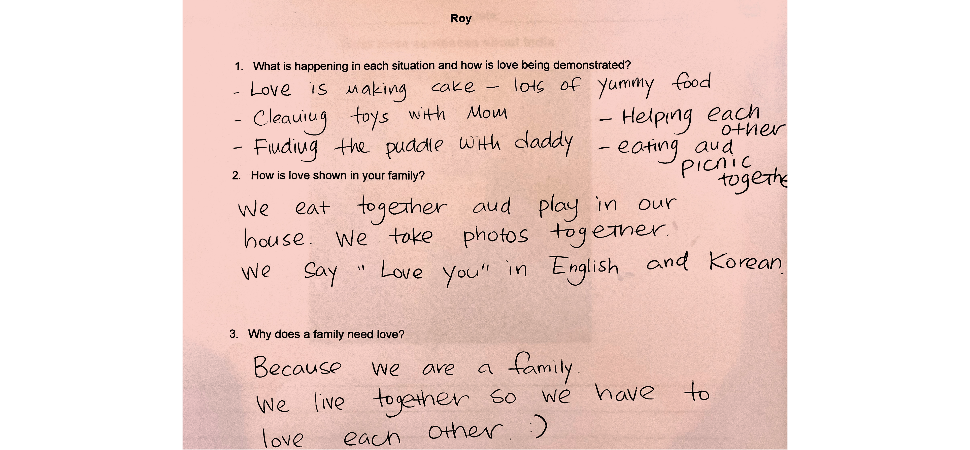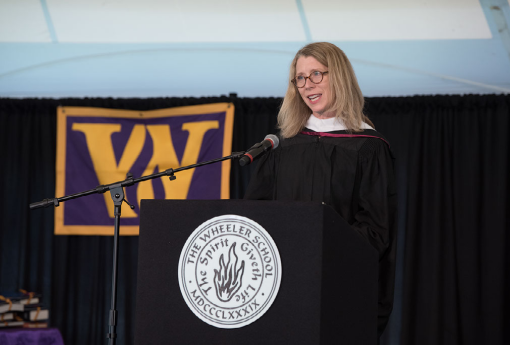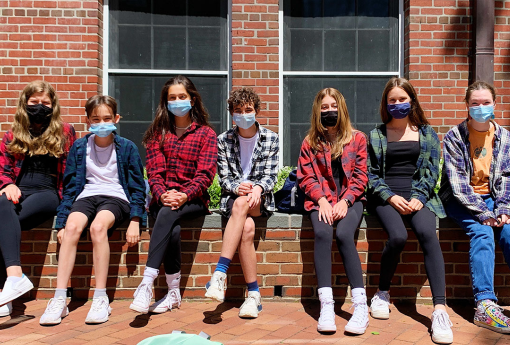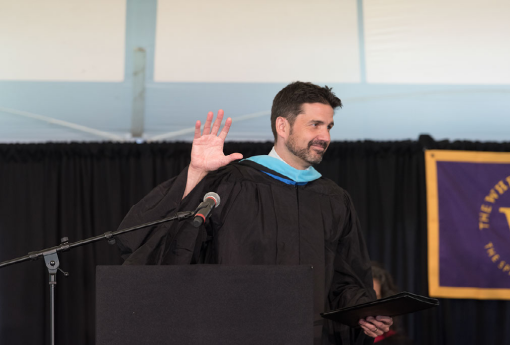
Growing Minds: How distance brings us closer
May 7, 2020
Teaching our youngest in the time of distance learning
By Mo Abdalah and Michelle Dolan, Nursery Faculty
Distance learning has changed the landscape of education in dramatic ways and inevitably affected how we, as teachers, approach instruction. It presented a unique and interesting challenge to us in Nursery class. Technology moved to the forefront of creative lesson planning and implementation and we were compelled to consider how we would continue to move learning forward and create social connections for children in our new digital classroom. How would we reach Wheeler’s youngest students (three and four-year-olds), an age group that benefits from close contact and knee-on-the-ground connections, to ensure they are still receiving a high-quality learning experience? How would we balance synchronous and asynchronous learning and partner with parents to deliver learning content to our students in the home setting?
The family unit
Each Spring, Nursery teachers and students dive into a thematic unit oriented around “the family.” It is an important topic of study because it allows young children to connect with who they are and to understand others. We ground this learning with the understanding that all families are valid, no matter their structure or cultural heritage. In the traditional classroom setting, we scaffold instruction by making personal connections with families, finding books for read-alouds (see link below) that provide students with cultural windows and mirrors, and create projects like making a family tree. Families, or the special grownups in those families, would also volunteer 15 to 30 minutes of their time to come into the Wheeler Lower School classroom and share something from home.
Curriculum is an anchor to connection
When mandatory stay-at-home policies due to the coronavirus became a reality, we had to quickly adapt our curriculum. We decided that we wanted this family unit to anchor our distance learning experience and we realized that we were given an unprecedented opportunity to delve deeply into this unit of study with the collaboration of our families. Distance learning would not be possible without their partnerships. We were reliant on them to access and implement our lessons and be present with their child to support and guide learning. This was a new way of looking at providing instruction, however, this collaboration became the fundamental element of this learning experience.
Lesson prompts help reinforce the family
We created a series of asynchronous lessons centered around student connections with their families, making the parents their source of learning, cultural development, and literacy. Conversations had specific prompts with the goal of student understanding: culture is what you do with your family, families all share love as a uniting force, families are all unique-including their own, their families are a part of who they are, that we all have things about ourselves and our families that are special, and diversity is a strength within communities.
Some examples of conversation starters were:
- What is the story of your name?
- What are some funny stories in your family?
- What are special foods you eat at home, leading to what shapes do you see in this dish?
Instead of only relying on texts for multicultural learning, parents and guardians became the funds of knowledge, equal to that of the teachers. Paired read alouds and activities became a time to promote a conversation between students and their families, conversations that may have never happened until they were older.
An online cultural “show and tell”
We combined these offline activities with synchronous learning. We scheduled Cultural “Show and Tells” during our closing meetings and allowed students to ask questions while connecting with their own experiences be it Korean, Indian, Polish, Portuguese, Jewish, Dominican, Sri Lankan, or Italian. One family was able to invite their grandfather, “all the way” from California, for a special lesson on Chilean culture and traditions. Video conferencing provided a space that brought us together — teachers, students, and guardians, where families shared recipes, photographs, books, videos, maps, and stories about their cultural heritage. What made these connections even deeper was that each student and their special grown-ups were present via the computer as each family shared their story. This wouldn’t have been possible in the traditional classroom where parents aren’t a part of the minute-to-minute school day.
What we all learned from the virtual unit
The changes to our curriculum implementation have had wonderful effects on our students. They are willing to share more during meetings and have more vocabulary and context to connect with school learning. One student remarked during an activity, “I love learning about culture”.
What affected our teaching most when planning for distance learning:
- Lack of access to physical books/library
- Lack of student autonomy when using technology
- A developmentally appropriate lack of student attention span
- No physical connections with students
- Extra burdens on working parents/families
- Difficulty in ensuring equal access to materials for projects
Biggest changes to our pedagogy:
- No direct instruction during the short live morning and closing meetings — the time is reserved for social connection and sharing between students and teachers and within the student group
- Materials for home learning — a mix of live and pre-recorded read-alouds, online videos and pre-recorded lessons provided in a weekly lesson template
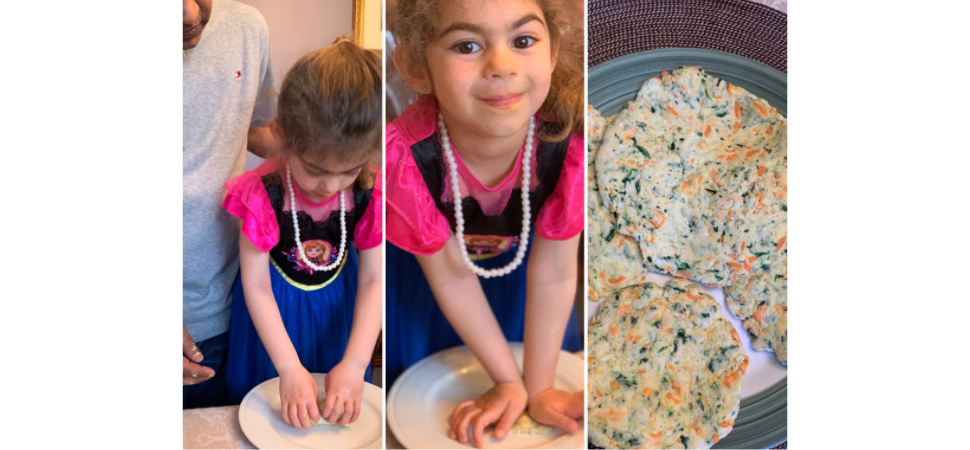
A grandparent and child share a cooking lesson with the class to make the Sri Lankan roti.
Our biggest takeaways
- Parents and family members have more flexibility in their schedule to share home traditions virtually via Google Meets, no matter where they are in the world
- Parents are providing a culturally relevant and authentic/meaningful learning experience that integrates literacy and social sciences
- Teachers use knowledge and perspective gained from families to adapt instruction to engage students more authentically
- Teachers are able to share aspects of their home life, further adding to the authentic nature of student learning
- Young students in early childhood are capable and should be treated as such. They understand “the big picture”; teachers should not shy away from important conversations for the sake of teacher “comfort.”
- Active collaboration with families is not only beneficial but necessary
- Parents are not barriers to learning and can be strong allies to teachers
- Parents become much more “plugged in” with their child’s academic progress after forging a deeper connection
- Teachers are cultural brokers between home and school life
- Teachers are language teachers, not just content couriers
- Students benefit from being empowered to express themselves and grapple with their ever-fluid cultural identity in developmentally appropriate ways
- Parents and guardians can participate in a student’s learning in any way they see fit, without sacrificing their own culture in the name of assimilation
- Teachers can have deep and meaningful connections with students without crossing professional boundaries
Wheeler’s culturally responsive pedagogy
A culturally responsive pedagogy, such as that at Wheeler, is one that occurs all year and has a focus that squares beyond the teaching of holidays and certain foods. There is a diversity of experiences within cultural identities, so a focus on families can prevent the essentialization or reduction of their identities to a single narrative.
During this time of distance learning, the lesson of family love has never been more evident.
Growing Minds is the periodic blog about Grades Nursery – 8 at Wheeler.
Cultural read-aloud books and recipes for Nursery students
